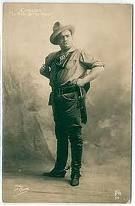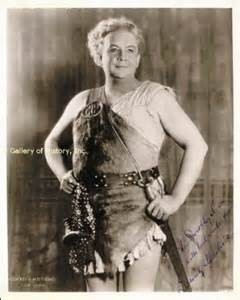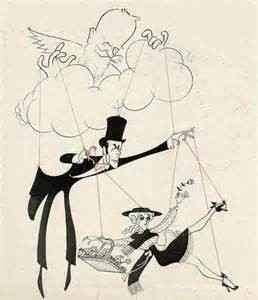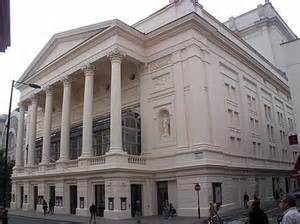General Director Kasper Holten’s statement that the new sound system at the Royal Opera Covent Garden will never be used to amplify singers could not be more welcome. A great sound system in an opera house asks for trouble. Considering what I think are fine acoustics in the Royal Opera, the whole idea seemed hard to believe. Though not a problem now in London, the possibility of amplification needs discussion.
The New York City Opera famously installed amplification because of the bad acoustics of the New York State Theater. At the time several artists, including Beverly Sills and Joyce Castle, commented that they had had no trouble being heard. Whether the sound enhancement helped or not is a question.
The acoustic nature of opera should never be compromised. We should hear clearly the difference between the size voice of a full dramatic soprano and a light lyric. For all the power of directors and the talk of the importance of challenging productions, people come to opera expecting to hear the honest sound of well-produced voices not “enhanced” by anything but their own technique.
Certain classic problems immediately come to mind. Puccini often doubled voices with  instrumental sound, a factor that demanded the kind of spinto singer that defined the age of verismo. His orchestra for La fanciulla del West, for instance, can very easily overbalance singers. With discreet amplification it would be easier to hear the singers over the orchestra, making it far more comfortable for both the singers and the conductor. The only problem is flat-out dishonesty at the very heart of what makes opera different. As for the operas of Richard Wagner or Richard Strauss, the possibilities for sound corruption are endless. Salome might really look like an older teenager with the electronic voice of Isolde.
instrumental sound, a factor that demanded the kind of spinto singer that defined the age of verismo. His orchestra for La fanciulla del West, for instance, can very easily overbalance singers. With discreet amplification it would be easier to hear the singers over the orchestra, making it far more comfortable for both the singers and the conductor. The only problem is flat-out dishonesty at the very heart of what makes opera different. As for the operas of Richard Wagner or Richard Strauss, the possibilities for sound corruption are endless. Salome might really look like an older teenager with the electronic voice of Isolde.
Additionally it could easily mean the end for big voices. The best recordings of Birgit Nilsson,  Leonie Rysanek, Lauritz Melchior, and Jon Vickers never really captured what we heard in the opera houses in which they sang. True, sound is better than it once was, much better, but from all the evidence available the excitement of a great voice will be sadly, irretrievably diminished if miking is instituted. And make no mistake: if miking occurs without protest, opera companies all over the world will do it. Large-scale present-day voices such as Stephanie Blythe’s, Nina Stemme’s, Christine Goeke’s, Stefan Vinke’s, and Greer Grimsley’s are rare; operas they sing could be sung adequately by smaller voices amplified, but they will sound like smaller voices enhanced. More important, the honesty of opera will disappear.
Leonie Rysanek, Lauritz Melchior, and Jon Vickers never really captured what we heard in the opera houses in which they sang. True, sound is better than it once was, much better, but from all the evidence available the excitement of a great voice will be sadly, irretrievably diminished if miking is instituted. And make no mistake: if miking occurs without protest, opera companies all over the world will do it. Large-scale present-day voices such as Stephanie Blythe’s, Nina Stemme’s, Christine Goeke’s, Stefan Vinke’s, and Greer Grimsley’s are rare; operas they sing could be sung adequately by smaller voices amplified, but they will sound like smaller voices enhanced. More important, the honesty of opera will disappear.
 I remember when, I believe, amplification first came to the New York theater with The Boy Friend in 1954 and then more noticeably two years later for My Fair Lady, the latter to help Rex Harrison, who was not a singer. Within a very few years every musical on Broadway was amplified, and then all the plays as well. At the present time in America, amplification has become painful to one’s ears. In Europe I have found that although in musical theater they too use amplification, it is less prominent; here it is ghastly.
I remember when, I believe, amplification first came to the New York theater with The Boy Friend in 1954 and then more noticeably two years later for My Fair Lady, the latter to help Rex Harrison, who was not a singer. Within a very few years every musical on Broadway was amplified, and then all the plays as well. At the present time in America, amplification has become painful to one’s ears. In Europe I have found that although in musical theater they too use amplification, it is less prominent; here it is ghastly.
Singers study for years to learn how to project properly, and a variety of sound from opera singers has been true since Monteverdi’s time. Even if voices in opera are even slightly enhanced, this takes away the one thing that makes opera different from every other entertainment in the modern world: the honesty of sound.


I could not agree more! Thank you!
Exactly! There should be another of those classic tags: To amplify is to falsify.
As for Rex Harrison and “My Fair Lady”–at best he merely pattered, Only with “I’ve grown accustomed to her face” did they trust him with a music line, and he walked through that too..
And as for “The Boy Friend”: I was there and who wouldn’t want to have augmented in his ear:
“All I want ..chug chug… Is a room … chug chug …. in blooms … chug chug .. buerry.
A good fight worth fighting.
Amplification of opera will mean the end of the art as we know it.
Well,…humm! They DID use amplification some years ago in a misconceived producction of Sweeney Todd some years ago. Perhaps it was a one off.
Greer Grimsley and his wife Luretta Bybee were two of the soloists for Beethoven’s Ninth Symphony a few years ago here in Seattle. I am familiar with the size of Mr. Grimsley’s voice, having heard him at Seattle Opera many times.
When the moment came and he opened his mouth to sing I noted how amazed and astonished were many of the people in the hall, people who had clearly not experienced his voice before. It was a special (un-amplified) night.
The first documented example of amplification of voices in a Broadway musical was “Dubarry Was a Lady” (1939.) By the late 1940s the practics was fairly common. “Carousel” was the last unmiked Rodgers and Hammerstein show to be presented in New York. “South Pacific” and “The King and I” were miked.
The generally accepted first instance of the use of a wireless body mike in a Broadway show was in “Jamaica” (1957.) Lena Horne had a lot of songs in that show and the orchestration was hard to cut through, so she was given a small boost without any fanfare. Soon after body mikes were assigned to Anna Maria Alberghetti (“Carnival”), Rudy Vallee (“How to Succeed…”), Barbra Streisand (“Funny Girl”) and Carol Channing (“Hello Dolly!”) So integral was the miking of Dolly’s role to the sound design of that show that every subsequent performer in New York also used this setup, even Ethel Merman. (Merman had previously been body-miked for the national tour of “Gypsy.”)
If you’re going to write about a subject, would it kill you to do a little research first instead of bursting out with your hands flailing all over the place?
I’m delighted that you have the accurate information for which I looked and couldn’t find. When amplification came to Broadway was not the point of my blog but rather the danger that opera companies might start using it. Thank you very much.
And as has been explained innumerable times in the New York press, the system installed in the New York State Theater was not for “amplification” but rather for the correction of the basic acoustic flaws of the space. You got everything in this entire blog post wrong except, of course, for the self-congratulation.
Sills and Carreras (and Domingo and Milnes and Ramey) had long since departed the City Opera when “sound enhancement” was installed by Paul Kellogg. In fact, it was installed not because the acoustics of the State Theater were so bad but because casts who had rehearsed at Glimmerglass were brought to the State Theater by Kellogg and found the enormous theater far more work to sing in than the tiny one upstate. They blamed the theater, but the fault lay in their own laziness.
Many New York opera-lovers stopped going to the City Opera after the equipment was installed. Everything above the First Ring sounded tinny. I would only sit in the central triangle where one heard voices and orchestra without magnification, and that meant I could only afford to go once a season or so. Attendance figures collapsed. It was an unmitigated disaster.
I quite agree that an honest sound and a balanced one are what opera needs, and that musicals have become almost unlistenable (and singers trained to perform in musicals are clueless without microphones). But I’ve overheard people at the rear of the Met Orchestra level complain about it and wish the sound were louder. I assume they prefer DVDs and movie theaters.
Your concern might be better placed if you were not working from what is clearly a false premise. You assume that all opera performances for all time will take place in spaces that are purpose-built to be opera houses. This is obviously false: the New York State Theater, for example, was never designed to be an opera house but rather a dance theater, and that is one (of many) reasons that the space was a difficult one for opera.
Most regional opera companies do not have a dedicated theater; they share a civic auditorium with a number of other tenants, and if that civic auditorium happens to be ideally suitable for operatic voices, that is more likely luck than design.
There is also the very important issue that most American auditoriums used for opera are significantly larger and different in design than the purpose-built European theaters for which the vocal lines and orchestrations for most classic operas were devised. “Don Giovanni” premiered in the Estates Theatre in Prague, with a seating capacity of less than 700. Italian theaters of the early 19th century, whatever their size, featured a very high stage under the overhang of which the percussion and brass were located, effectively muting these loud sections of the orchestra. Until late in the century theaters were built with a significant apron area extending beyond the proscenium into the more acoustically lively auditorium space, and it was absolutely expected that any important singing would be done from this “friendly” area.
There is the very clear example of the covered pit at Bayreuth which nobody presenting the Wagner music dramas has seen fit to emulate. There are in any opera orchestra today larger-bore brass instruments and steel-cored strings capable of making a good deal more noise than their equivalents in the 18th and 19th century could do. And there have also been a couple of generations of conductors who have measured their worth in how loudly they can get an orchestra to play.
I might also point out Melchior and Vickers never sang the role of Tristan without large cuts; Nilsson for most of her career sang her big roles with cuts everywhere except Bayreuth, and she never sang on stage an uncut Elektra or Turandot. The version of “Die Frau Ohne Schatten” Leonie Rysanek sang to so much acclaim omitted something like 25% of the score. Today most opera performances are done complete or with much smaller cuts than were standard a couple of generations ago.
And then there is the issue of recordings: singers today are competing with the best Renata Tebaldi could do in 20 hours spread across a week of sessions.
The playing field is not level in any sense of the word: you are expecting, in fact demanding that opera singers be superhuman simply so you can have the selfish thrill of having your ears rattled — and insisting that the rattling be done purely acoustically, because you don’t like (or, more accurately, don’t understand) what you call “amplification.”
No wonder so many singers blow their voices out these days: people like you basically are begging them to do so.
I believe in your desire to throw your superior knowledge in our faces you have missed the entire point of the article. It has nothing to do with the size of the voice, the size of the house, the size of the orchestra, or the number of notes sung. The heart of opera is the human voice reaching the human heart without any mechanical/digital intermediary involved. That, really is where the true magic and passion is created.
I am not interested in any singer’s blowing out his or her voice; I, however, do believe very strongly that using amplified sound in opera takes away a vital distinction between it and other musical theater forms.
Just as a matter of accuracy, though I can’t say if it happened on any other occasion, Lauritz Melchior sang Tristan complete in the summer of 1930 at the Bayreuth Festival. In those days, as you suggest, Tristan und Isolde and all the longer Wagner operas were severely cut at the Metropolitan. This practice, although smaller cuts were taken during the Bing administration, did not stop until James Levine became music director.
Leonie Rysanek did not omit 25% of the role of the Empress in Die Frau ohne Schatten as you imply. The role of the Frau, sung by Christa Ludwig in those first years of performance, was severely cut as was the role of the Amme, sung by Irene Dalis. There were a some cuts in the Empress’s music, but they were few and far between. My own marked score tells me exactly where the cuts were taken.
If your argument is to encourage amplification in opera houses, which it seems to be, then our difference is profound.
If operahouses would start amplifying it would destrot the beauty of a LIFE performance !
Hearing a singer in an opera performance I don’t even mind if the singer has a bad day and does not give a perfect performance. This is LIFE, this is the beauty of it. If I had to listen to amplified opera I would rather listen to a pergect recording !
I would not be so quick to believe they installed a system and won’t use it.